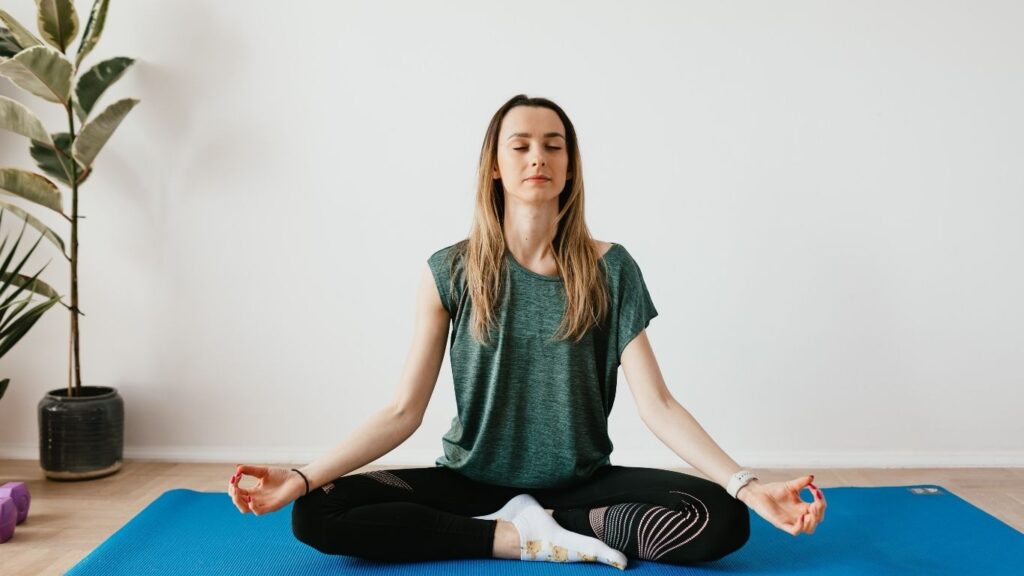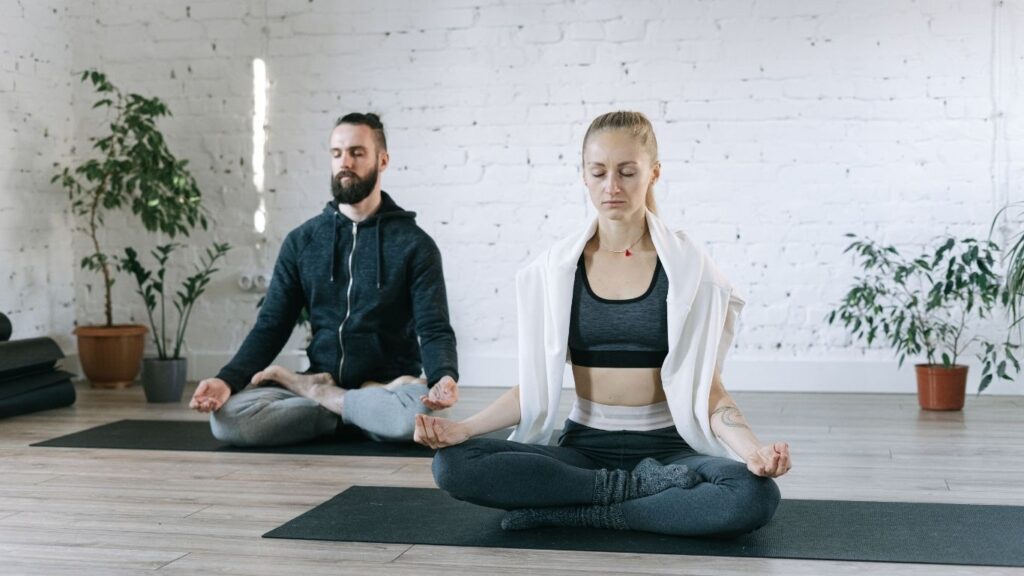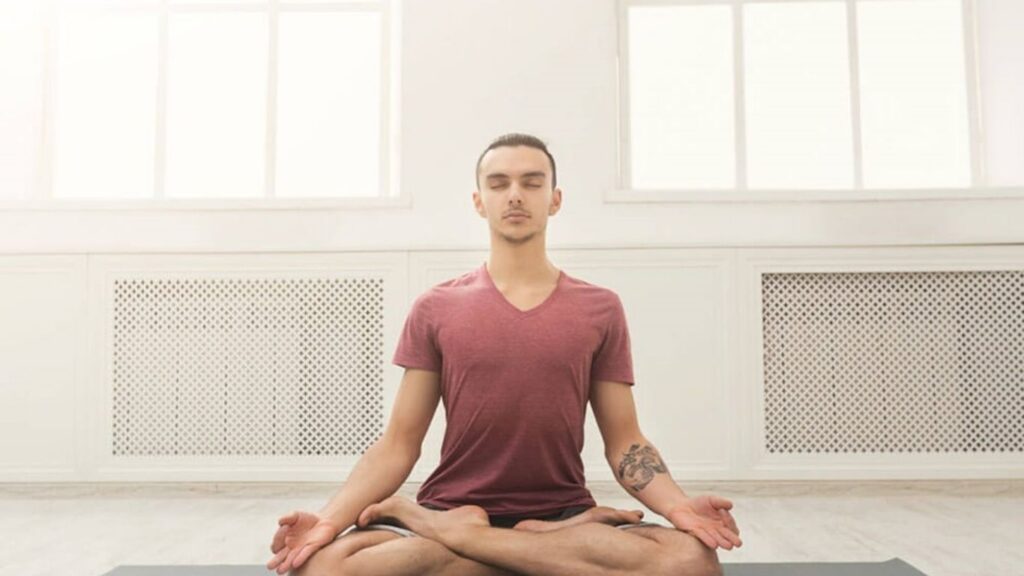In the diverse and enriching practice of yoga, certain asanas or poses carry a weight that transcends the physical form. Among these, Padmasana, or the Lotus Pose, stands as a timeless symbol of serenity, balance, and the deep roots of yoga’s ancient tradition. This iconic posture, often depicted in the statues of deities and the enlightened, serves not only as a physical exercise but as a gateway to deeper self-awareness and spiritual awakening. In this exploration, we delve into the multi-faceted benefits of Padmasana, uncovering the layers of this enigmatic pose that has captivated yogis for centuries.
The Historical and Cultural Significance of Padmasana
Before we immerse ourselves in the physicality of the Lotus Pose, it’s essential to appreciate its historical and cultural backdrop. Padmasana is a Sanskrit term where ‘Padma’ means ‘lotus’ and ‘asana’ means ‘posture’. In Eastern traditions, the lotus flower is revered, symbolizing purity, enlightenment, and rebirth. It is said that the lotus blooms from the murky waters, untouched and unsoiled by the mud, reflecting the journey of the human spirit from the darkness of ignorance to the light of knowledge.
Anatomical Overview and the Physical Benefits of Padmasana
Padmasana is a cross-legged yoga posture where each foot is placed on the opposite thigh with the soles facing upward. This position, though seemingly simple, is a compound exercise engaging multiple muscle groups. Here are the physical benefits of practicing the Lotus Pose:
Joint Health and Flexibility: Padmasana’s configuration requires and also promotes flexibility in the hip joints, knees, and ankles. Regular practice can prevent stiffness and sustain joint mobility, reducing the risk of injuries and conditions like arthritis.
Improved Digestion: The gentle pressure created on the lower spine and abdomen stimulates the digestive organs, promoting better digestion and alleviating constipation.
Enhanced Circulation: With the legs crossed and the spine aligned, blood circulation is improved, especially around the spine, abdomen, and pelvic area, nourishing these regions with increased oxygen and nutrients.
Spinal Alignment and Core Stability: The upright spine in Lotus Pose encourages proper posture. The natural curvature of the spine is maintained, strengthening the core muscles, which are integral to supporting the spine.
Stress on Ligaments and Strengthening: Holding the pose can put stress on the ligaments around the knees and ankles. When practiced with caution and proper technique, this stress can lead to stronger, more resilient ligaments.

Mental and Emotional Benefits of Padmasana
The Lotus Pose is not just a physical exercise but also a profound meditative stance. Its mental and emotional benefits are deeply intertwined with its serene posture.
Conducive to Meditation:
Padmasana is traditionally used for meditation. The stability and comfort it provides enable the practitioner to sit for extended periods without discomfort, facilitating deeper meditation.
Improved Concentration:
The pose encourages an inward focus, helping to sharpen concentration. It allows for the calming of the mind and is said to alleviate various mental distractions.
Balance and Poise:
There is a symbolic balance in the Lotus Pose, reflecting in the practitioner’s emotional state. Regular practice can enhance emotional equilibrium, helping individuals handle stress and anxiety with greater poise.
Awakening of Chakras:
In the spiritual practice of yoga, Padmasana is believed to awaken the chakras or energy centers within the body, particularly the root (Muladhara) and sacral (Svadhisthana) chakras, promoting a sense of groundedness and creativity.
The Path to Padmasana: Preparatory Poses and Considerations
Not everyone can perform Padmasana, especially beginners or those with specific health concerns. It’s crucial to approach this pose with patience and proper preparation.
Preparatory Poses:
Before attempting Padmasana, one should master simpler poses that increase hip flexibility, like Baddha Konasana (Bound Angle Pose) and Janu Sirsasana (Head-to-Knee Pose).
Warm-Up Is Key:
Engage in a series of warm-up exercises to loosen the hip joints, knees, and ankles. This preparation is essential to prevent strains and injuries.
Listen to Your Body:
It’s vital to practice mindful awareness of your body’s limits. If you feel any pain, especially in the knees, gently come out of the pose and consult a yoga instructor for modifications.

The Art of Practicing Padmasana
When practicing Padmasana, alignment and balance are fundamental. Here’s a step-by-step guide:
- Start by sitting on the floor with your legs stretched out, spine erect.
- Bend the right knee and place the right foot on the left thigh, with the sole facing upward and heel close to the abdomen.
- Repeat the same step with the left leg.
- With both legs crossed and feet placed on opposite thighs, place your hands on the knees in Mudra position.
- Keep the spine straight, the head and neck in line with the body, and gaze forward or gently close the eyes.
- Breathe deeply and maintain the pose for a comfortable duration.
Incorporating Padmasana into Your Yoga Routine
Padmasana can be included at the beginning, middle, or end of a yoga session. It’s versatile as a meditative pose or as part of a sequence like the closing poses in Ashtanga yoga.
The Transformative Journey with Padmasana
The practice of Padmasana is akin to the unfolding of the lotus itself—a journey from the murky waters of physical constraints and mental distractions to the blossoming of potential and tranquility. Whether you are a seasoned yogi or new to the practice, the Lotus Pose offers a mirror to your inner self, reflecting the ongoing process of growth and enlightenment.
Navigating Challenges and Embracing Adaptability
Padmasana is not without its challenges, especially for those with less flexibility or certain health issues. It is imperative to recognize the importance of adaptability in yoga. Props such as cushions or blocks can be utilized to provide support and ensure the safety and comfort of the practitioner.
The Lotus in Bloom: Beyond the Pose
The Lotus Pose is not just an exercise in flexibility or meditation; it is a living expression of the philosophical underpinnings of yoga. It encapsulates the essence of yoga’s teachings—balance, harmony, purity, and the possibility of transcending the limitations of the mundane to reach a state of higher consciousness.
Concluding Thoughts: The Essence of Padmasana in Modern Life
In the swift currents of contemporary life, Padmasana provides a tranquil haven and an opportunity for introspection. It imparts the significance of tranquility, the influential essence of our breath, and the capacity to discover serenity within ourselves. As you fold your legs into the emblematic lotus bloom, let the pose be a reminder of the beauty that unfolds when we give ourselves the time and space to connect with our deepest selves.

Embarking on the journey of Padmasana is not merely about achieving a pose; it’s about embracing a practice that enriches the body, nurtures the mind, and uplifts the spirit. As you unfold into the lotus, may you find the grace and wisdom it symbolizes reflected in your daily life.
Padmasana is more than just a symbol; it’s a practical tool for enhancing one’s yoga practice and life. The Lotus Pose encourages us to rise above our circumstances, much like the lotus flower rises above the water, to bloom with resilience and beauty.
Also read: Yoga and Technology: A Perfect Match for the Modern Age
